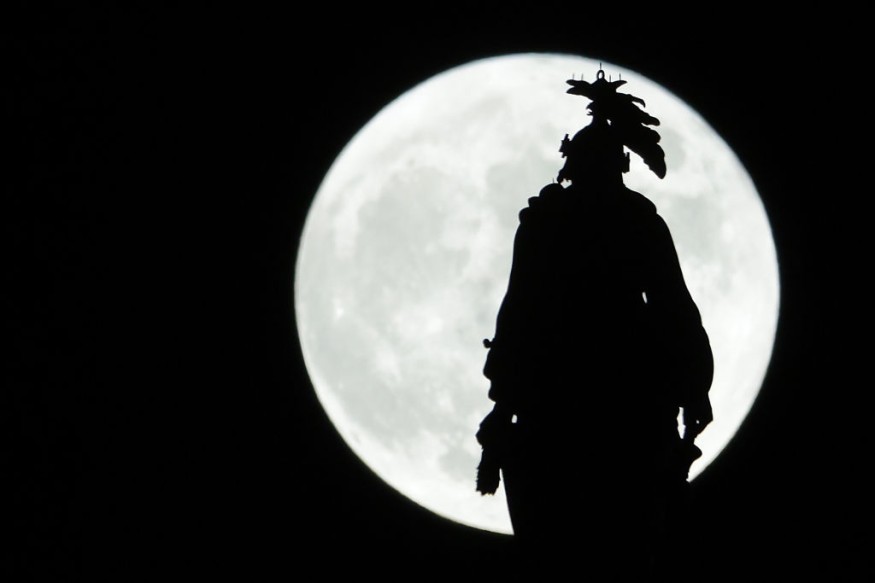The Hunter's Moon in October, also known as the Drying Rice Moon, Blood Moon, or Sanguine Moon, reaches its peak on October 28, 2023. Discover the origin of its name and explore Moon phase dates, lunar folklore, and other details as the Moon shines brightly through the night, rising at dusk and setting at dawn.

October Full Moon: The Hunter's Moon
The Hunter's Moon in 2023 is set to peak on October 28th at 04:24 ET; while in 2024, it will take place on October 17th at 19:26. The exact times for the Hunter's Moon may differ depending on your time zone.
Its name is derived from traditional activities in the Northern Hemisphere during October, as it's a time for preparations before winter sets in, including hunting, butchering, and preserving meats. This Anglo-Saxon name has endured through time and is widely recognized today.
Native Americans also named the Full Moon based on fall-related events, such as Drying Rice Moon, Falling Leaves Moon, and Freezing Moon, while the Celts referred to it as the Seed Fall Moon.
Alternate names like Pagan Blood Moon or Sanguine Moon have been associated with this Full Moon, although they should not be confused with a Blood Moon, which is another name for a total lunar eclipse.
Notably, the Hunter's Moon coincides with the Harvest Moon every three years, with the latter being the Full Moon closest to the September equinox, marking the start of fall in the Northern Hemisphere. However, due to differences between astronomical seasons and lunar months, the specific month in which the Harvest Moon occurs may vary, typically falling in September but occasionally in October.
Throughout history, the Full Moon has played a significant role in marking the transitions between months and seasons. In certain years, there are 13 Full Moons, and this anomaly is referred to as a Blue Moon, deviating from the conventional Full Moon naming convention.
Contemporary Full Moon names often draw from these ancient month names, with many stemming from Colonial Americans incorporating Native American month names into their calendars.
Observing the Hunter's Moon
The Moon's ecliptic longitude is precisely 180° opposite that of the Sun, as observed from Earth's center, marking the exact moment of a full moon. Nevertheless, this moment does not bestow any distinctive appearance on the Moon, and a full moon can be observed at different times throughout the night.
Upon achieving full phase, the Moon will be positioned at a declination of 14°00'N within the Aries constellation and will be approximately 369,000 km away from Earth. The chart provided illustrates this month's full moon size relative to its largest (perigee) and smallest (apogee) potential apparent sizes, all drawn to scale.
In the days following October 29, the Moon's rise time will shift, with each successive night seeing it rise about an hour later, making it more visible later in the night. After a few days, it will exclusively grace the pre-dawn and early-morning sky. Approximately a week after reaching the full moon, as it approaches its last quarter, it will rise in the middle of the night and set around noon.
RELATED ARTICLE: Last Supermoon of 2023: Here's How To Watch the Full Harvest Moon
Check out more news and information on Full Moon in Science Times.










